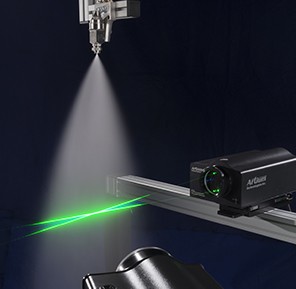We now know that a spray nozzle’s drop size distribution is critical to the application for which it’s used – but, why? Why does a nozzle’s range of droplet sizes matter? Let’s look at a few examples:
- In agricultural pesticide spraying, drop size needs to be small enough to completely cover the crop, but not so small that the drops drift into the air and cause environmental harm.
- In pharmaceutical spraying, drops need to be large enough to fully coat tablets, but not so large that too much product is wasted by overspraying.
- In sanitation spraying, drops needs to be small enough to evaporate quickly without sticking to surfaces, but not so small that they evaporate too quickly and don’t properly sanitize.
So, it’s clear that a nozzle’s drop size matters. For different reasons. Depending on the application. Because drop size is so critical, it’s also important to understand the factors that affect a nozzle’s drop size distribution.
Factors Affecting Drop Size Data
By far, the most important factor affecting drop size is the liquid being sprayed. Depending on the liquid’s viscosity and characteristics, the drop size can vary dramatically. Because viscosity and surface tension increase the amount of energy required to atomize the spray, an increase in either will typically increase the drop size. If the liquid is viscous or its characteristics are not well known, we recommend more thorough spray analysis testing.

After this, the nozzle type is an important factor in a spray’s drop size. Typically, full cone nozzles have the largest drop size followed by flat spray and then hollow cone nozzles. Additionally, air assisted nozzles provide very fine drops that are smaller in size than hydraulic nozzles.
Finally, the relationships between drop size and flow rate, pressure and spray angle are fairly straightforward. Drop size and flow rate are in direct relation, so increasing the flow rate will increase the drop size (and vice versa). Pressure and spray angle, however, are inversely related to drop size. So, increasing either the pressure or the spray angle will decrease the spray’s drop size. Similarly, decreasing pressure or spray angle will increase the drop size.
Now that we understand both the importance of a spray’s drop size distribution and the factors affecting it, next we’ll discuss how we obtain drop size information on a nozzle or spray.
If you’d like to discuss the topic more in depth please contact us or connect with me directly via LinkedIn.


